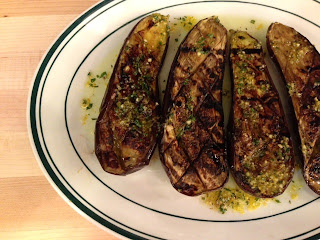Brodetto is the fish soup or stew that is the symbol of the fish cuisine of the Italian Adriatic coast, from Venezia Giulia in the north to Molise in the south.
Recipes vary in each community along the coast, but the dish originated among sailors who would
cook their meals at sea from part of their catch. It was also the dish of fisherman and fishmongers, left with the little fish in their nets after they sold all the big ones at market.
In the middle Adriatic (such
as Le Marche, where Chef Fabio is from), brodetti
often include firm fleshed fish, cuttlefish, crustaceans, fresh tomato,
onion and garlic, green peppers, chili and saffron giving the dish more "zing." So it is at Fiola.
 |
| Adriatic Seafood Brodetto at Fiola |
We start by marinating fish bones and crustacean shells overnight with aromatic herbs, garlic and citrus zests. The following day we start with a soffritto of onions, celery and garlic, which we sweat down in extra virgin olive oil until soft and translucent. Next we add green tomatoes, green peppers, finger chilies and saffron, and cook until those vegetables are tender.
We add the marinated fish bones and all of the aromatics, and cook them for approximately 10 minutes. We deglaze the pan with anise liqueur, and reduce by half, then add a dry white wine. Once the alcohol has cooked out, we cover the base with fish and shellfish stock, and simmer for approximately 1 hour. We blend the mixture, then strain it through a fine chinois, pressing the vegetables and bones well so that none of the precious flavorful liquid is wasted.
We use this brodetto to open the mussels and clams for the stew, adding to its flavor, as well as poaching the fish, shrimp, calamari, and whatever else came from our fishmonger that day. Though the original brodetto recipe calls for 13 fish, one for each of those at the Last Supper, Chef Fabio's rule is that it must contain at least two different fin fish, two types of shellfish, and either calamari or octopus.
Buon Appetito!























